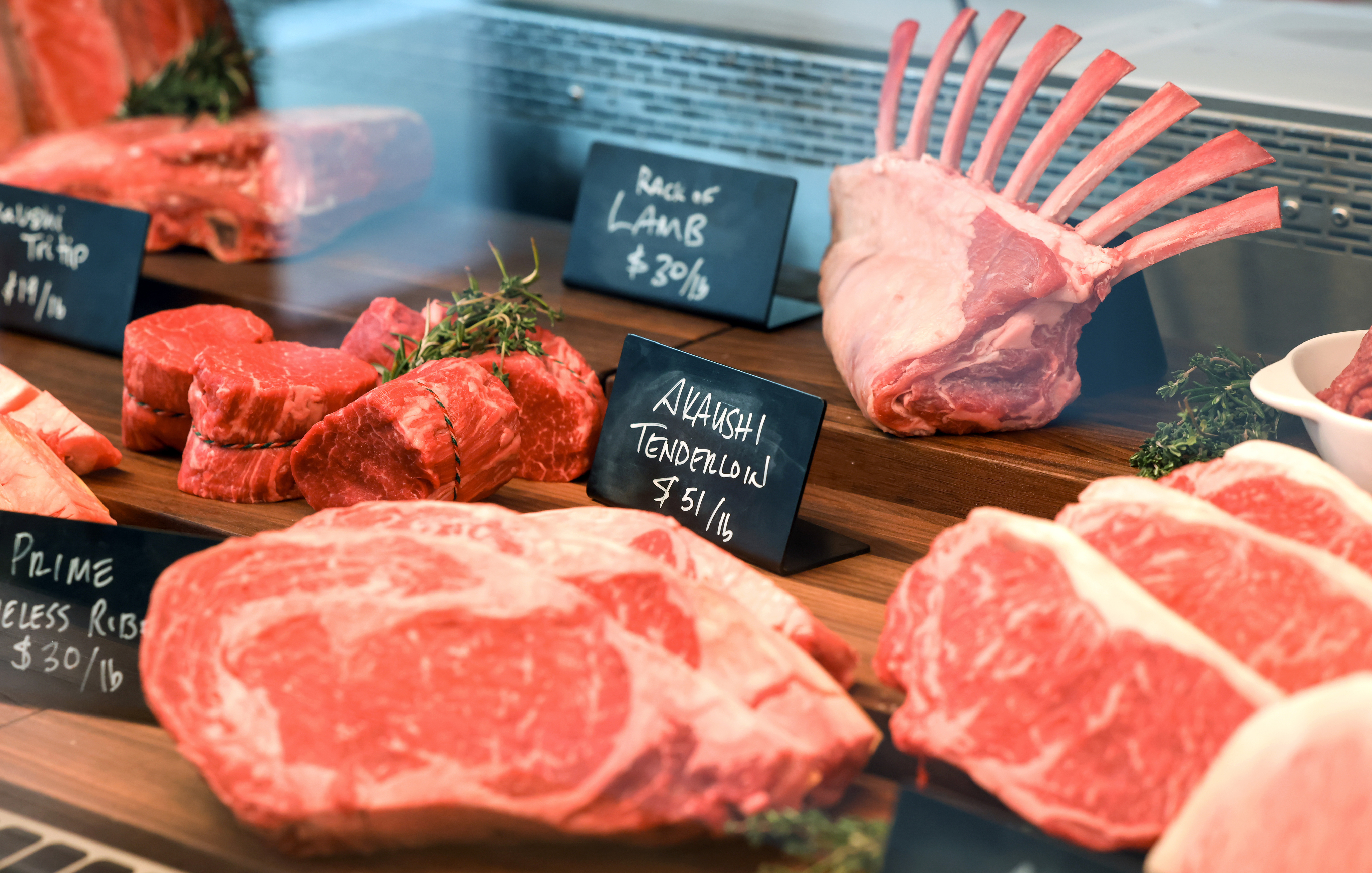Just How to Select the Perfect Cut of Meat From a Trusted Meat Market
Selecting the optimal cut of meat from a relied on meat market requires a thoughtful technique that stabilizes high quality, cooking function, and spending plan. Understanding the various types of meat and their particular cuts is essential, as is engaging with your butcher to gain understandings right into sourcing and preparation.
Understanding Meat Cuts


For example, the tenderloin is valued for its buttery texture and very little connective tissue, making it ideal for quick cooking approaches such as barbecuing or pan-searing. On the other hand, tougher cuts like the brisket or shank benefit from slow-moving cooking strategies to break down collagen, generating rich and delicious results.
In addition, the fat content of a cut plays a critical function in taste profile and dampness retention during food preparation. Cuts with higher fat material, such as ribeye, offer a more durable flavor, while leaner choices, like sirloin, might need mindful preparation to stay clear of dryness (bagley meat market edwardsville il). Comprehending these subtleties enables educated options that boost culinary developments, guaranteeing that each meal showcases the very best high qualities of the chosen meat
Aspects to Think About
When choosing the ideal cut of meat, numerous critical aspects enter play that can considerably affect the last recipe. First and foremost, think about the kind of meat you want-- beef, pork, lamb, or poultry-- as each offers special tastes and appearances. The details cut within that category is similarly crucial; for instance, ribeye provides abundant marbling, while tenderloin provides a lean, buttery structure.
One more factor is the cooking approach you plan to utilize. Cuts ideal for grilling, such as T-bones or sirloins, vary from those better matched for sluggish food preparation, like chuck roasts or shanks. Furthermore, quality is vital; constantly choose meat with a vibrant shade and company appearance, signaling top quality and appropriate handling.
In addition, consider the source of the meat. A trusted meat market commonly gives locally sourced, hormone-free, and grass-fed choices, which can boost taste and dietary worth. Your budget will certainly assist your choice. Premium cuts might use phenomenal preference, however there are also cost-effective alternatives that, when prepared properly, can yield scrumptious outcomes. Balancing these variables will certainly help you pick the best cut for your culinary demands.
Inquiries to Ask Your Butcher
A butcher's expertise his explanation can be indispensable when picking the perfect cut of meat for your cooking undertakings. Start by asking concerning the source of the meat.
Next, ask regarding the various cuts available for the sort of meat you like. A knowledgeable butcher will describe the nuances of each cut, aiding you select one that matches your cooking method and preferred end result. Do not hesitate to ask about the ideal food preparation techniques for a particular cut; butchers commonly have pointers that can boost your dish.
It's likewise prudent to ask about the meat's quality. An excellent butcher will certainly be excited to share their competence and suggest cuts that you could look here will certainly thrill your taste buds. Engaging your butcher with these inquiries can dramatically boost your meat choice experience.
Recognizing High Quality Meat

Texture is another vital aspect; top quality meat should feel firm and slightly resilient to the touch. Prevent any type of cuts that really feel slimed or exceedingly completely dry, as these can suggest perishing or inappropriate storage space. In addition, scent plays an essential duty; fresh meat should have a clean, neutral fragrance, while any off-putting or sour odors are red flags.
Lastly, consider the resource. Buying from a credible meat market, where the meat's origin is known, can ensure higher top quality criteria. By concentrating on these signs-- color, marbling, texture, smell, and resource-- you can with confidence choose cuts that will elevate your food preparation and eating experience.
Cooking Methods for Each Cut
Picking the appropriate food preparation method is paramount for taking full advantage of the flavor and inflammation of each cut of meat. Various cuts possess unique features that dictate the most ideal cooking techniques.
For tender cuts, such as filet mignon or ribeye, dry heat techniques like grilling, broiling, or pan-searing are suitable. Conversely, tougher my link cuts, such as chuck or brisket, benefit from moist heat approaches, consisting of braising or sluggish cooking.
Pork chops and hen breasts are functional and can be cooked using both completely dry and moist approaches. While cooking or roasting can generate delicious outcomes, poaching or sautéing can maintain dampness and inflammation. For lamb, approaches like toasting or braising are suggested, as they complement the meat's durable taste.

Final Thought
In conclusion, choosing the perfect cut of meat from a reliable meat market requires a thorough understanding of meat cuts and consideration of numerous elements, consisting of resource, high quality, and cooking approaches. Involving with the butcher with targeted queries can generate useful insights and suggestions tailored to certain culinary requirements. Prioritizing both top quality and spending plan will certainly improve the general gastronomic experience, making sure that the selected cut meets assumptions in both taste and preparation.